It’s estimated there are thousands of wasp species in Ohio.
Wasps have an important role in maintaining the natural ecosystem in the state, together with bees. Many of these bees have pollination benefits.
These wasps can also deliver a painful sting.
Here are the most common wasps in Ohio.
Table of Contents
1. Dark Paper Wasp
The Dark Paper Wasp (Polistes Fuscatus) is common through Eastern and Northern US. It’s also found in Ohio.
This social wasp grows to a size between 15 and 21 mm and it can come in different colors, depending on its geographical location.
The wasp is known for its role in maintaining ecosystems in woodlands and wooded areas. It uses wood to build umbrella-like nests. This is why it’s only found around woodlands.
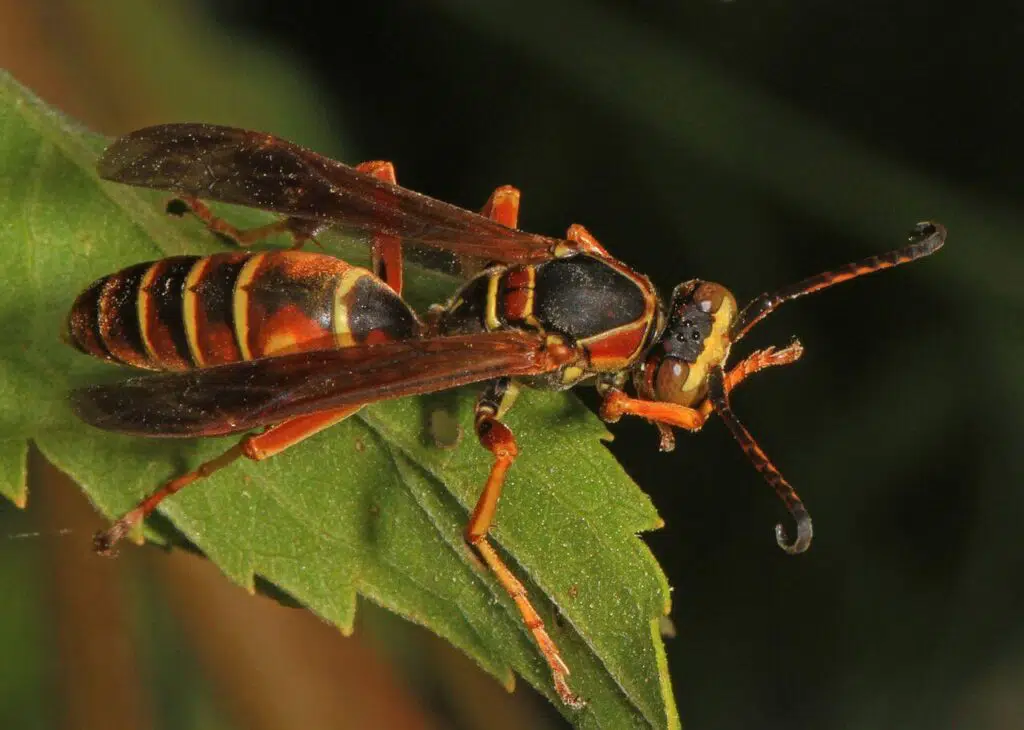
The wasp lives around one year. The queen wasp emerges from hibernation in early spring. She builds the nest and lays eggs inside. This is then the place where worker infertile female wasps emerge. The second generation of fertile females and males emerge later.
All of these wasps recognize the leadership of the queen.
2. Bald-faced Hornet
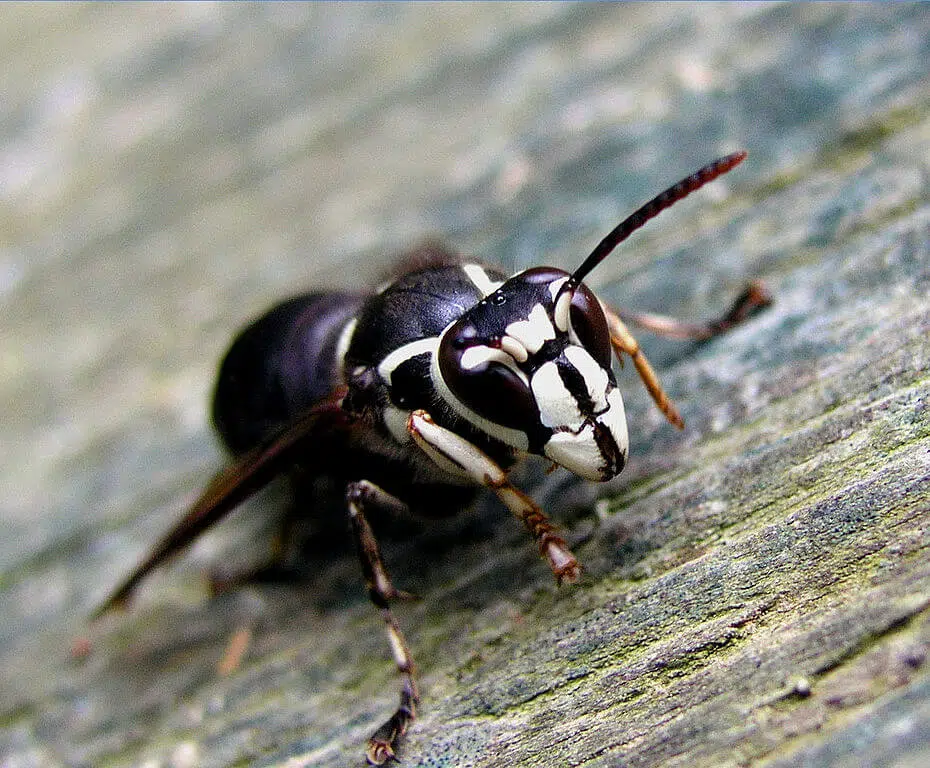
The Bald-faced Hornet (Dolichovespula Maculata) is found in Ohio, as in most US states. It’s not a true hornet as it’s a type of Yellowjacket. Only the European hornet is a true hornet in the US.
The Bald-faced hornet is easy to recognize. It has white markings similar to dots and stripes on its head. It grows up to 20mm although the species can be half this size at times.
This species of hornet isn’t considered invasive. Even more, it’s a type of hornet that has a beneficial role in pollination.
The Bald-faced hornet also helps eliminate other Yellowjackets from the area. It’s rare to see a Bald-faced hornet’s nest being destroyed. This only happens when the nest of the wasp is too close to home.
Otherwise, the nest is a clear indication of a controlled insect population in the area as the Bald-faced hornet often feeds on all types of insects in the vicinity of the nest.
3. Eastern Yellowjacket
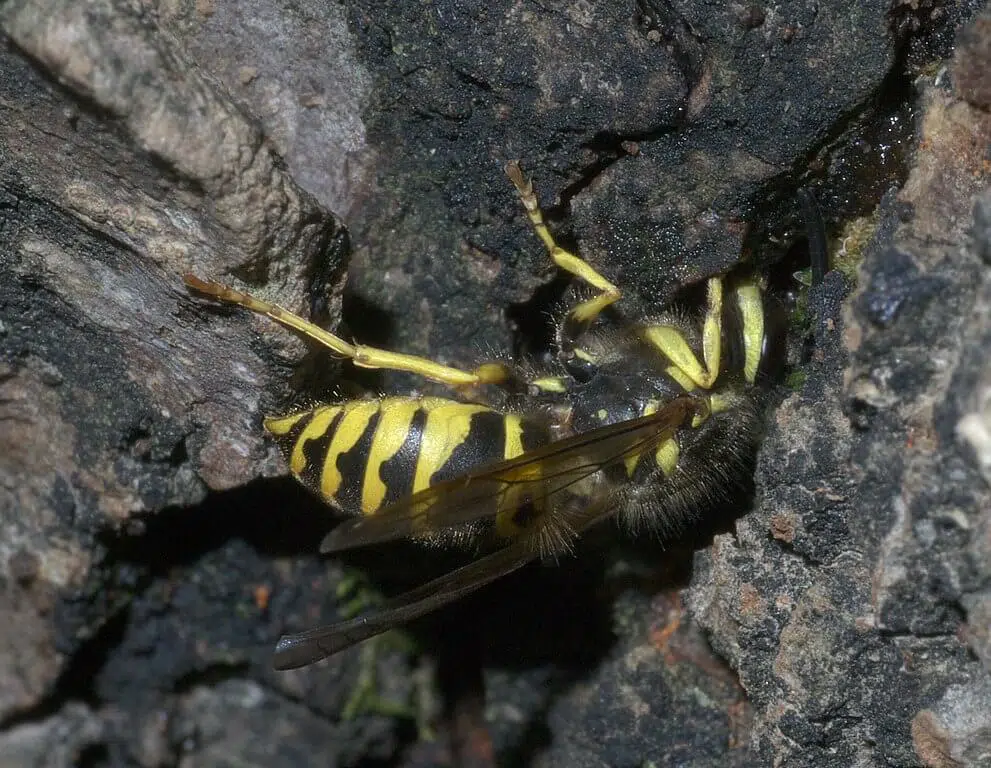
The Eastern Yellowjacket (Vespula Maculifrons) is one of the most common wasps in Ohio. This species is has been known for its creativity when it comes to building nests as it can build shelters next to buildings as well as underground.
The wasp has a varied diet which includes feeding on nectar, honey, fruits, and live or dead insects.
There’s a clear hierarchy in the colonies established by the Eastern Yellowjacket. These colonies sprung up in spring. They later start to develop into hundreds and even thousands of cells. Worker wasps are responsible for creating and maintaining these nests. Males have a defensive role. Up to a few thousand males, Eastern Yellowjacket can be seen patrolling the nest area at a time.
4. European Paper Wasp
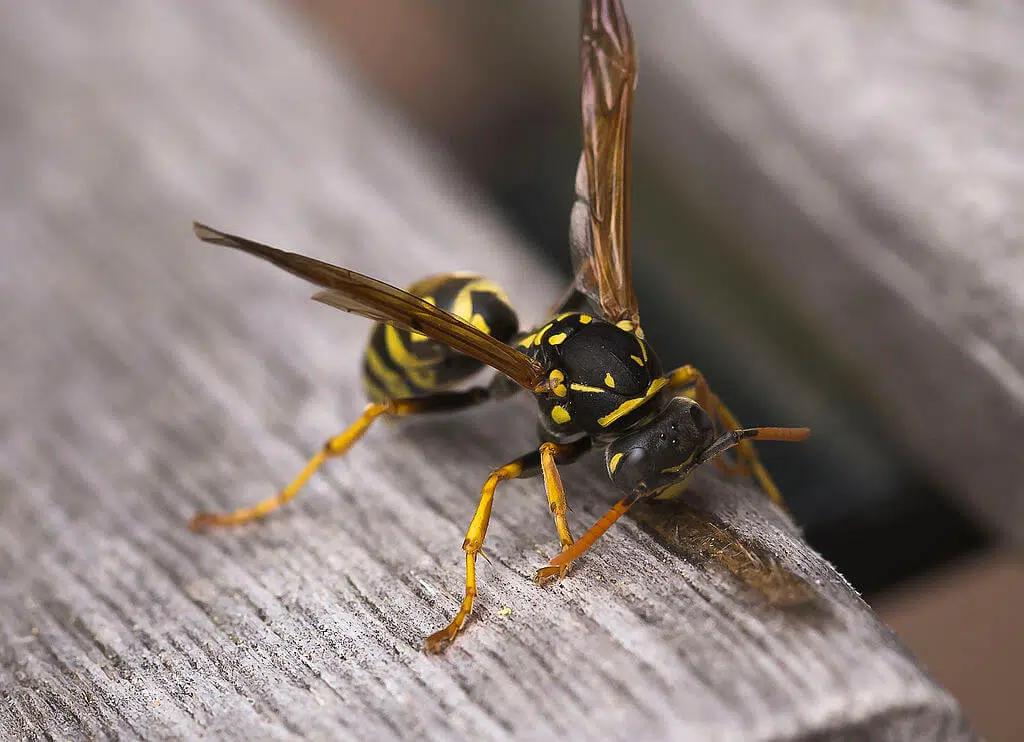
The European Paper Wasp (Polistes Dominula) lives in all types of woodland, grassland, and man-made structures. This wasp species are diverse and it has complex habits which allow it to establish a clear hierarchy.
The alpha female is dominant. The queen wasp can establish a nest by herself or together with other females. There’s also a leading male wasp identified by distinct marks on its abdomen.
These wasps aren’t entirely known when it comes to preferred prey. Some of the wasps are known for eating insects and bringing insects back to the nest to feed offspring. Other European Paper Wasp species are known for only feeding caterpillars to their emerging wasps back in the colony.
Birds are common predators of the species. Some founding female wasps prefer to use buildings as shelter when establishing a nest, for this reason. Others add tree branches around the nest as an extra layer of protection.
5. Great Golden Digger Wasp
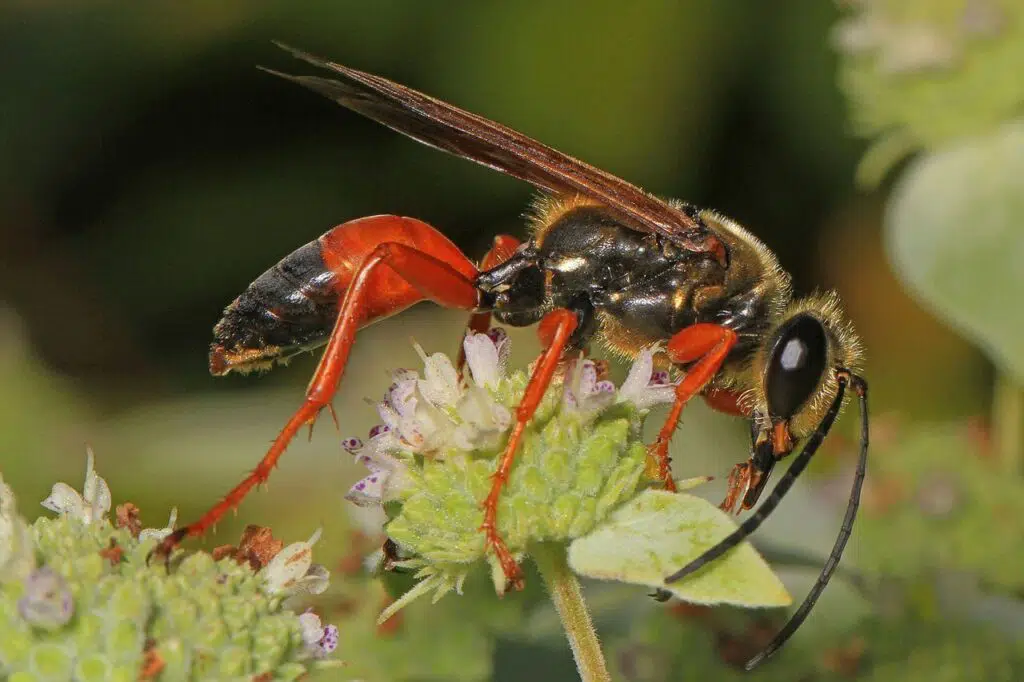
This orange and black digger wasp (Sphex Ichneumoneus) is not dangerous to humans. It’s one of the digger wasps known for its efforts of digging soft soil to lay eggs in. The female wasp digs tunnels are as deep as a few inches where she lays a paralyzed insect head first.
It then lay an egg on top of this insect for the emerging wasps to feed on. The insect remains alive but paralyzed after being stung by the female wasp.
The species of wasps are often threatened by small birds that try to eat the stung insects while being transported to the underground tunnels.
The Great Golden Digger female wasp only lays in insects in undisturbed tunnels or moves along to another tunnel accordingly. This species of wasps don’t remain with the emerging wasps as they live in the area after completing the egg-laying process.
6. Gold-marked Thread-waisted Wasp
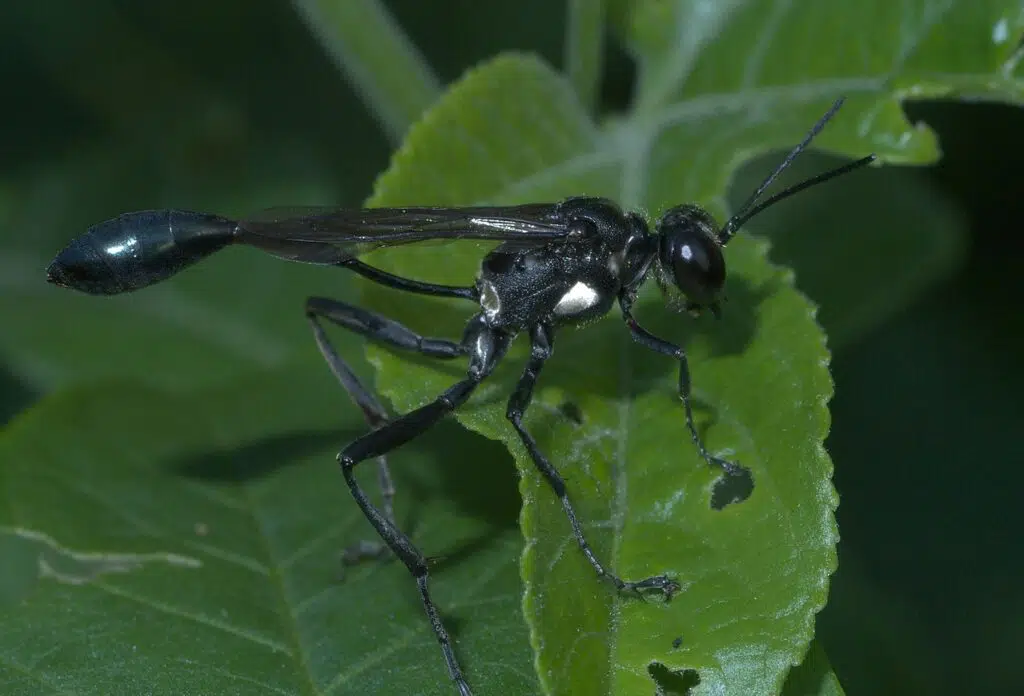
This wasp species (Eremnophila Aureonotata) can be recognized by its black body. It has a thin body that is even thinner towards the abdomen. This thin body allows the wasp to be fast.
It’s one of the most efficient wasp species that dig in the ground.
The Gold-marked Thread-waisted Wasp can also painfully sting people. Stinging is rare, however. This mainly happens when the wasp feels threatened.
The wasp is also known as one of the species that control the caterpillar population. It stings and paralyzes caterpillars to feed its young wasps emerging from eggs below the ground. The species is widely spread in the state and through the US and Central America.
7. Fraternal Potter Wasp
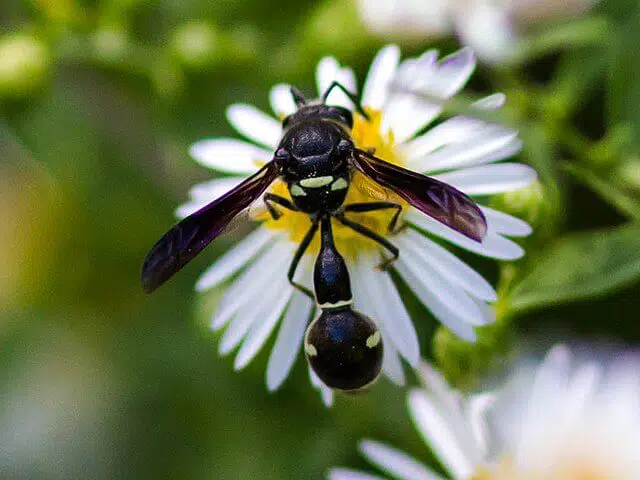
Part of the Vespidae family, the Fraternal Potter Wasp (Eumenes Fraternus) can be confused with the Gold-marked Thread-waisted Wasp. Both have a black body that is thinner at the abdomen. But the Fraternal Potter Wasp also has a few more white horizontal lines on its body.
This species is known for making small clay pots, however, as its name suggests. The wasp uses clay and water to create small pots which have a protective role for its eggs. Each small clay pot holds one egg sheltering it from predators.
8. Four-toothed Mason Wasp
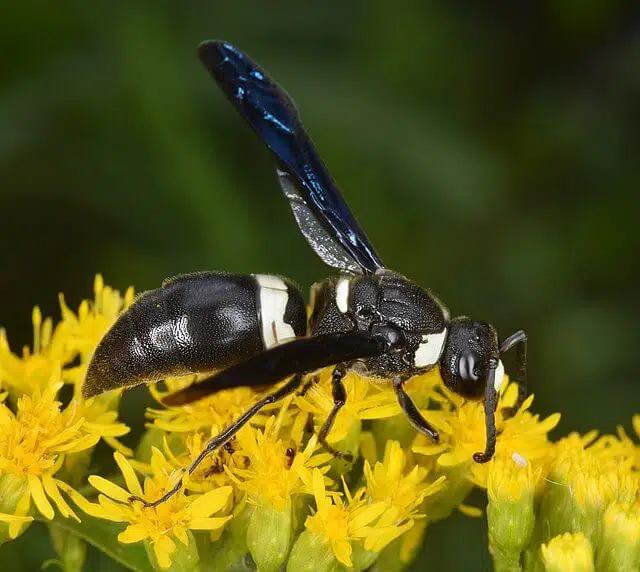
This species (Monobia Quadridens) is mostly seen in tunnels and the abandoned nests of mud daubers or of other wasps. Its seen as a dangerous species to people as the female can deliver a very painful sting. The male wasp can also sting but with lesser inflicted pain as it can’t inject venom.
This species is also known for growing in two generations per year. One appears in the spring. Another generation grows to overwinter. The wasp is mainly known for eating caterpillars but it also goes for a wide variety of moths.
9. Metric Paper Wasp
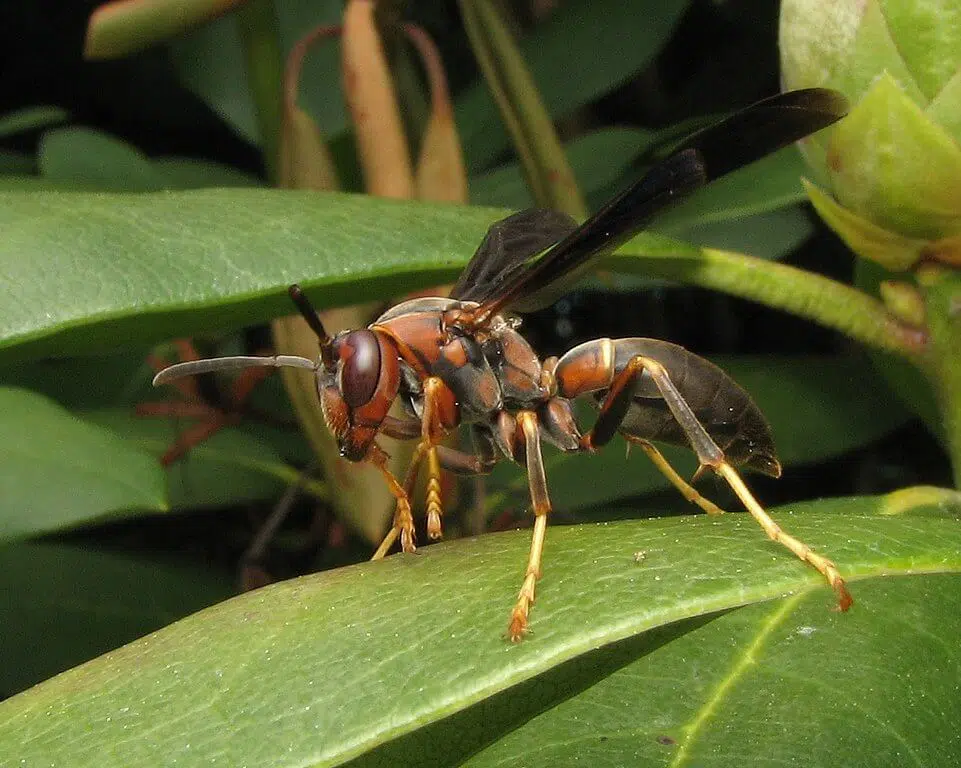
This is a distinct type of wasp known for living in shrubs and even building nests attached to buildings. It has a few distinct traits that make it memorable. It builds large nests living in colonies. These colonies are believed to be the most numerous around June.
The Metric Paper Wasp (Polistes Metricus) is also widely known as one of the species that share its nest with other wasps of the Polistes species. It can even reuse the same nest of other species without having to build new nests.
People also know the Metric Paper Wasp as the species that exit the nest vertically for long flights and horizontally for short flights. It’s believed this can be a defensive mechanism or a system of getting high up in the air first when trying to fly long distances.
10. Blue-winged Scoliid Wasp
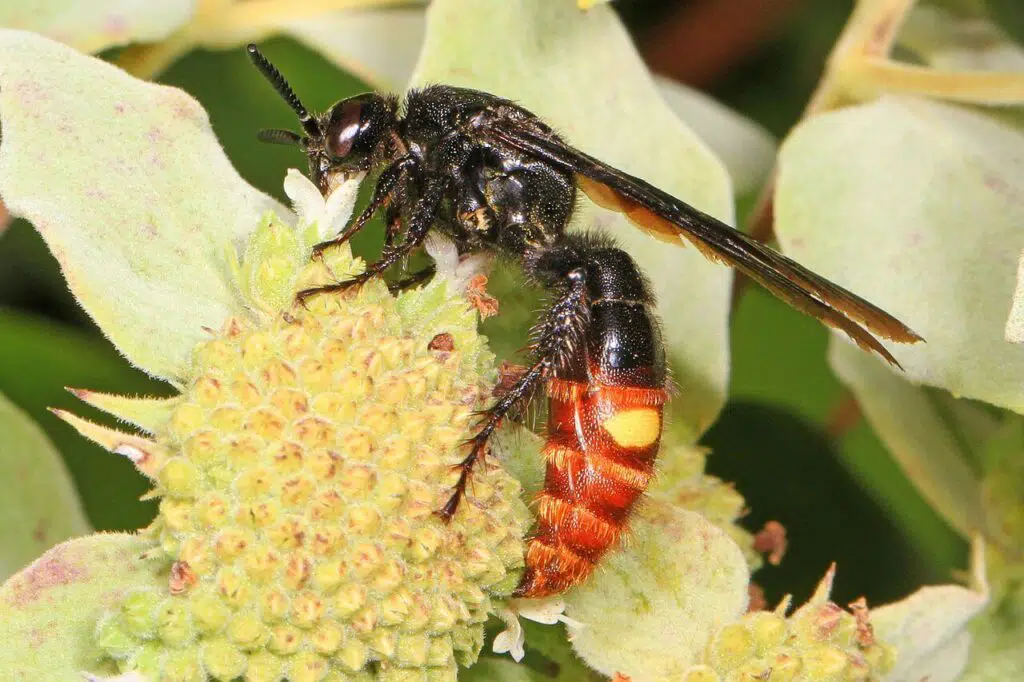
This wasp (Scolia Dubia) is not generally known for stinging humans. It’s known for its ability to dig looking for grubs. The wasp is generally interested in digging soft soil where it lays eggs on top of grubs. The June Beetle is one species that sparks its interest more than others.
This digging wasp is also easily distinguished due to its two-tone body color. Its upper body is black while the abdomen is red. Its abdomen is also characterized by red, yellow, and black horizontal lines.
The wasp is easy to spot on flowers where it can be found eating pollen throughout the day.
11. Yellow-legged Mud-dauber Wasp
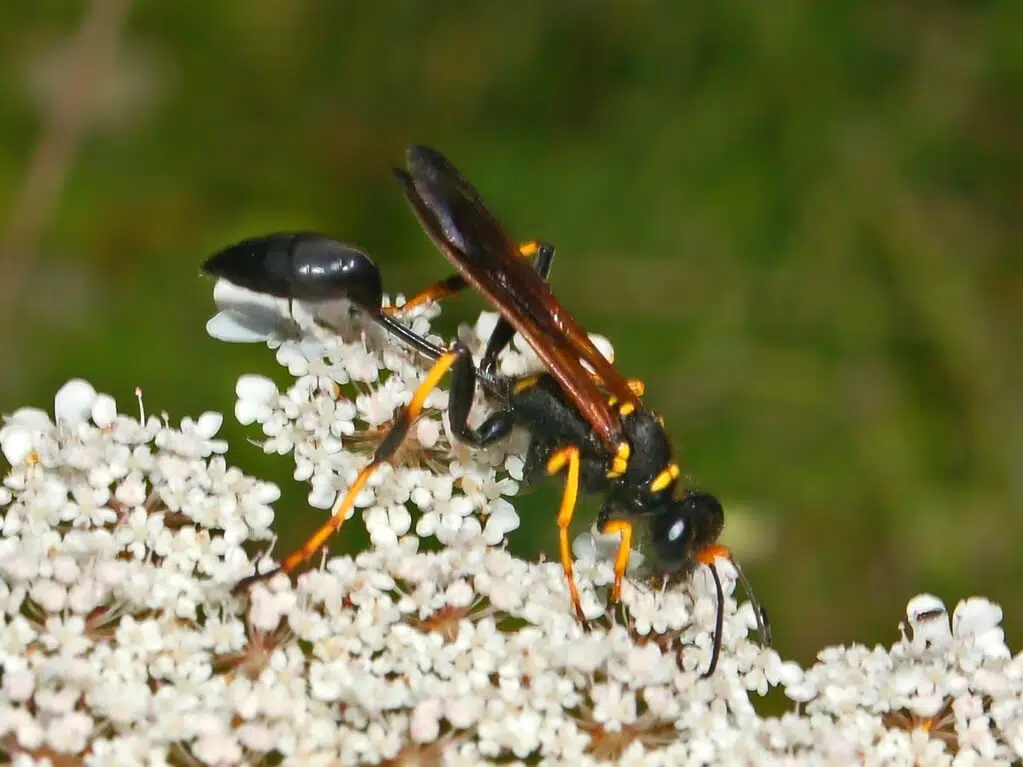
This species (Sceliphron Caementarium) is known for making shelters and nests out of the mud. These can be made on the ground or even on walls, particularly next to homes, garages, barns, and other man-made structures.
The black and yellow wasp can sting. Its sting is generally painful.
The wasp is also known for its ability to hunt spiders. Its venom might not be harmful or deadly to humans but it’s very harmful to spiders.
A stung spider instantly becomes paralyzed. While the venom doesn’t kill the spider, it doesn’t allow it to escape either.
This venom is a mechanism that allows the wasp to paralyze a wide range of spiders which are then used for food as eggs are laid on top of these spiders during the reproductive process.
12. Furry Oak Leaf Gall Wasp
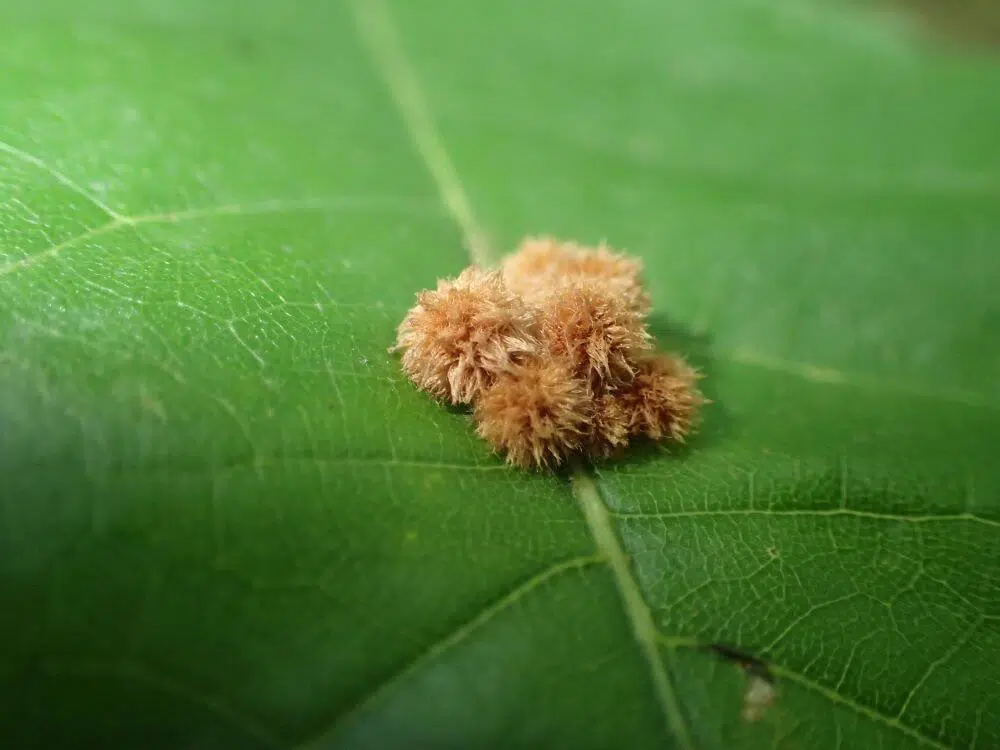
The Furry Oak Leaf Gall Wasp (Callirhytis Furva) is a species of gall wasps mostly found on oak leaves. The gall is often taken as part of the tree but it’s a developing wasp.
Most galls of the species are brown-red and they are located in pairs on oak leaves. Lumps of up to 3 globs are also common for this wasp species.
13. Katydid Wasp

This wasp (Sphex Nudus) is recognized by its thin black body and contrasting orange legs. It has a thin abdomen and a black coloring which makes it easily visible on flowers where it likes to eat pollen. However, the wasp also can kill other wasps as well as other insects and even spiders.
This wasp species has long translucent black wings. These wings are considerably longer than its body overlapping the abdomen. Wings that are so long are ideal for flights. The wasp is an avid flier, particularly when it comes to finding the pollen of Queen Anne’s flowers.
14. Great Black Digger Wasp
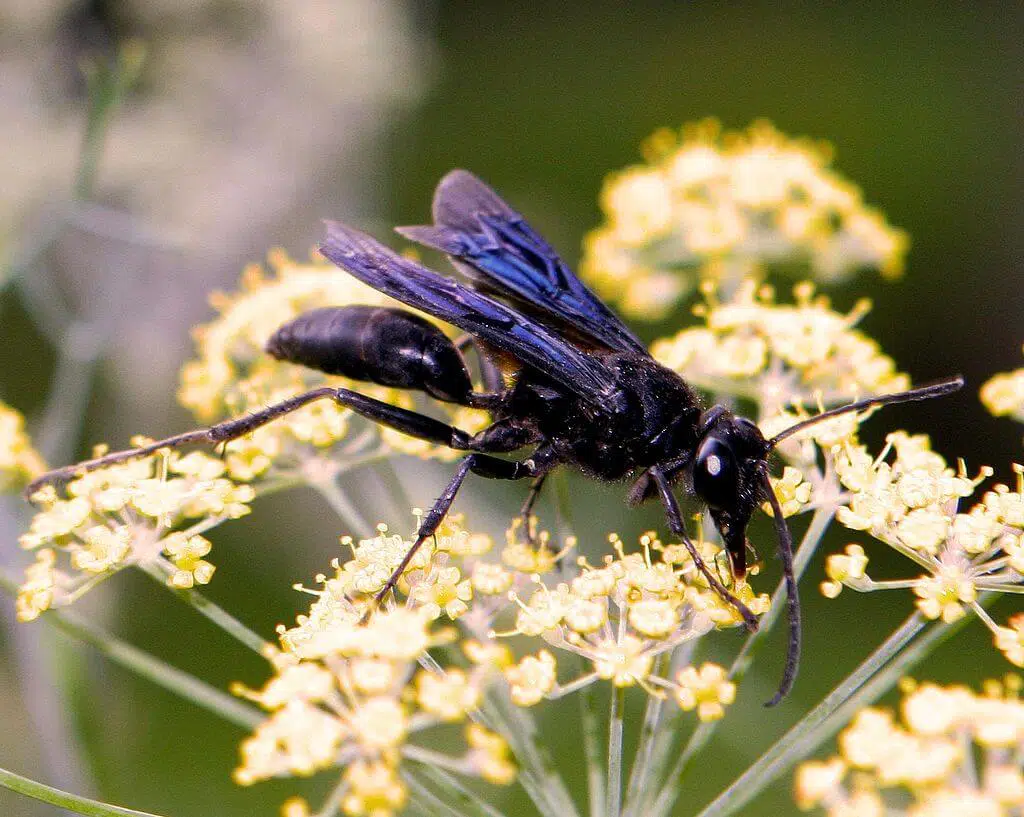
The Great Black Digger Wasp (Sphex Pensylvanicus) is one of the most common wasps in Ohio.
It’s a species known for its ability to sting 3 times. It can sting its prey once behind the head and twice in the abdomen for complete paralysis. It rarely kills its victims as it uses them as live food to leg eggs on top of.
As a digger wasp, the Great Black Digger is a species that goes deep underground. It digs tunnels and chambers where it lays eggs. It then brings all types of insects such as moths as food for the emerging young wasps.
Furthermore, the size of the Great Black Digger Wasp also deters people from it. This species grows anywhere between 20 and 30mm.
15. Four-banded Stink Bug Wasp
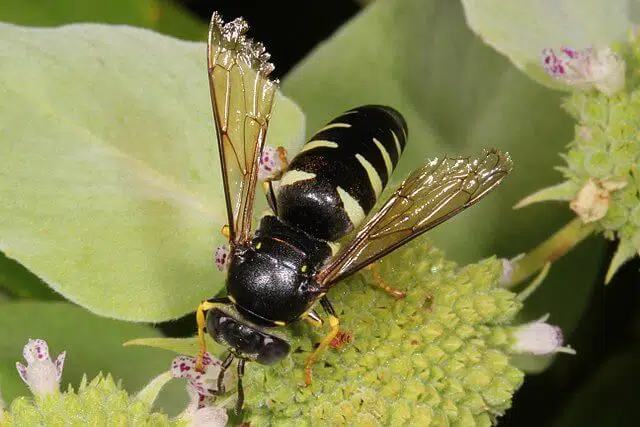
Mainly found in Northern states such as Ohio, the Four-banded Stink Bug (Bicyrtes Quadrifasciatus) is identified by its black and white body. White horizontal lines are visible on its abdomen. The legs of this wasp are of vivid yellow coloring.
These wasps live in nests but they’re often seen alone out in nature. Male wasps like to sit on flowers eating plenty of nectar. Females are responsible for keeping the nest running and providing food. Females also eat nectar but they also hunt and provision the nest.
They like to sting and paralyze True Bugs to bring them into the nest.
16. Eastern Cicada-killer Wasp
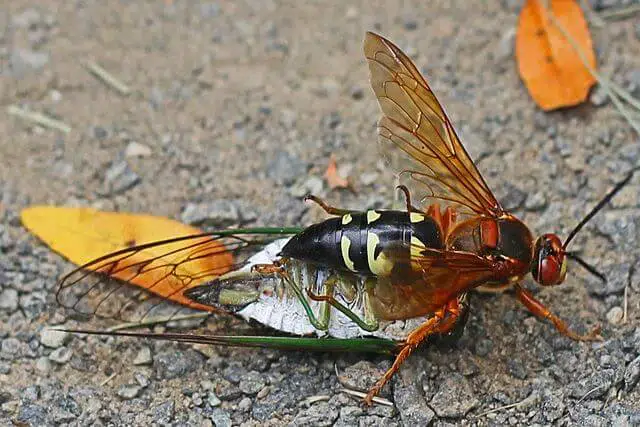
These feared wasps (Sphecius Speciosus) are some of the most popular in the state. As their name suggests, they kill cicadas which are used as live paralyzed food brought to feed emerging wasps underground. The wasps also build nests but they live solitary lives.
While female wasps are generally aggressive, even the male Eastern Cicada-killer Wasp can appear aggressive. Male wasps immediately surround potential predators and even humans approaching the nest, mainly to investigate the potential for danger.
Male wasps can’t sting. Female Eastern Cicada-killer Wasp generally stings people when handled roughly.
17. German Yellowjacket
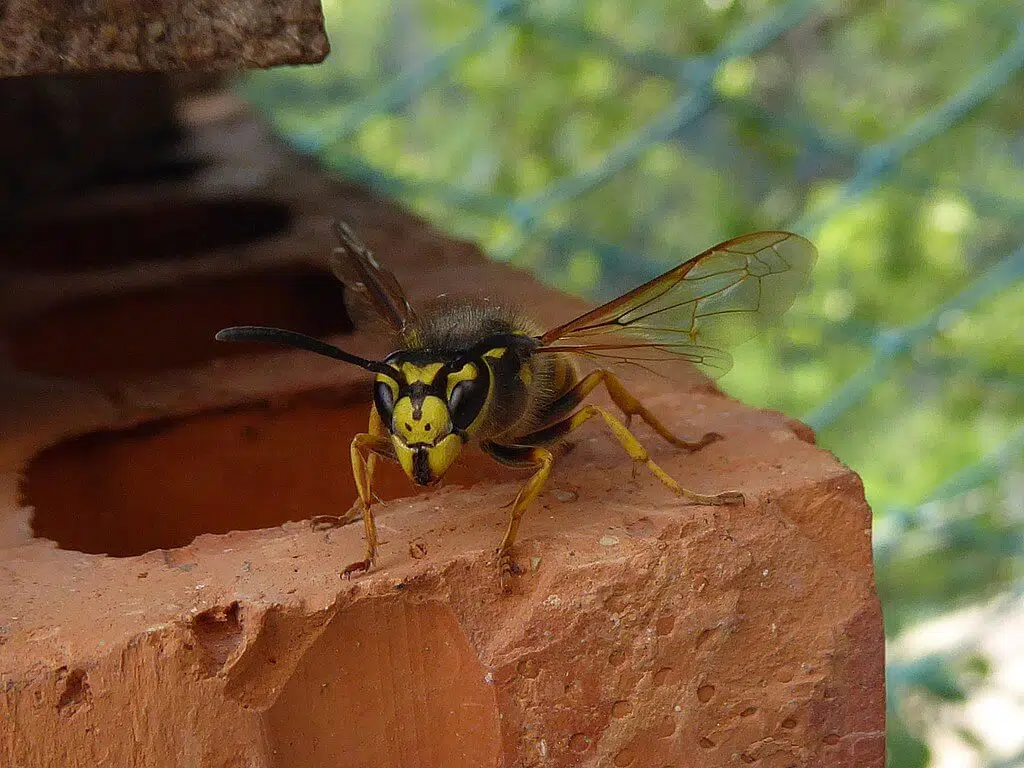
The opportunistic German Yellowjacket (Vespula Germanica) made its way to Ohio and the rest of the country from Europe.
A wide variety of prey and food characterizes the eating habits of the species. It’s known for eating everything from honey to carrion and even spiders. It paralyzes spiders with its powerful sting.
The queen wasp can mate and lay eggs, unlike other female wasps of the species. The female mates with up to 7 males per season.
Dead bees and other types of insects are generally used as food for their larva back in the nest.
The species is seen as a pest in North America and Ohio. Its ability to quickly colonize and reproduce at a high rate are reasons of concern. However, it’s not as dangerous as in other parts of the world where its colonies are more destructive.
18. European Hornet
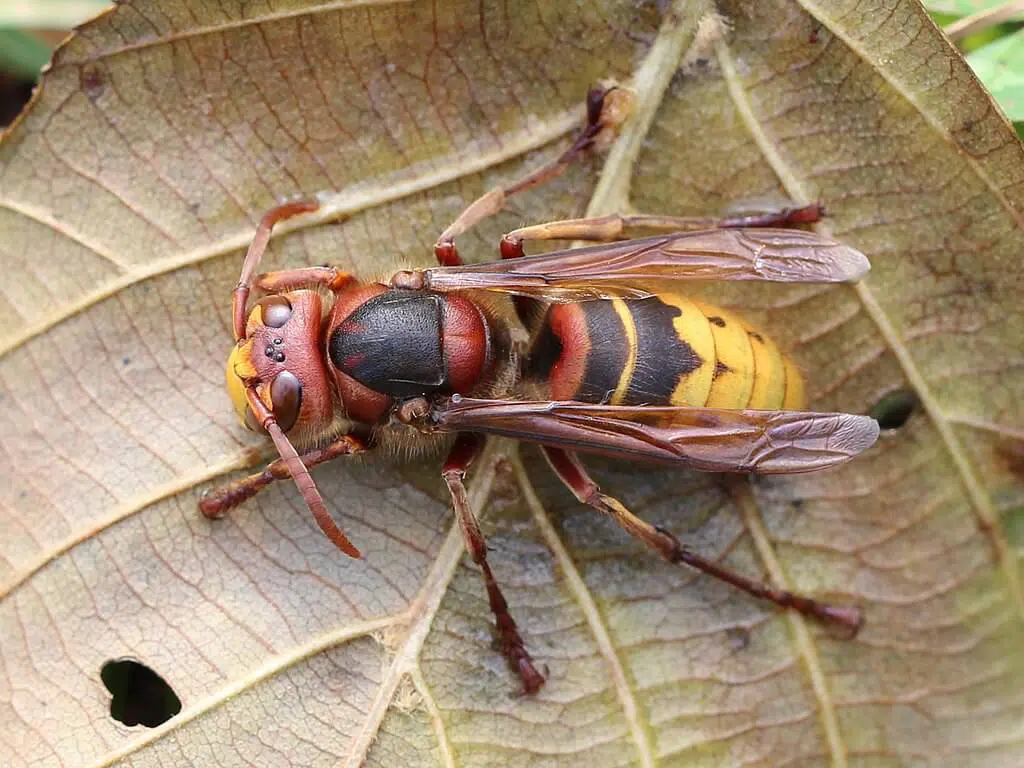
The European Hornet (Vespa Crabro) is the only true hornet wasp in Ohio and the country.
It’s not as dangerous as the Asian Hornet or the Giant Asian Hornet in relationship to humans. Its sting rarely requires medical attention. This wasp only stings when handler roughly or when in the proximity of food as it generally avoids contact with humans.
The European Hornet is carnivorous. It eats large insects, moths, and even other wasps. This species is endangered in some parts of the world as people destroy its nest. It’s also protected by law in countries such as Germany where heavy fines are given to those destroying its nest.
The species is also known for building paper nests. These are some of the most complex wasp nests in the state.
19. Nearctic Blue Mud-dauber Wasp
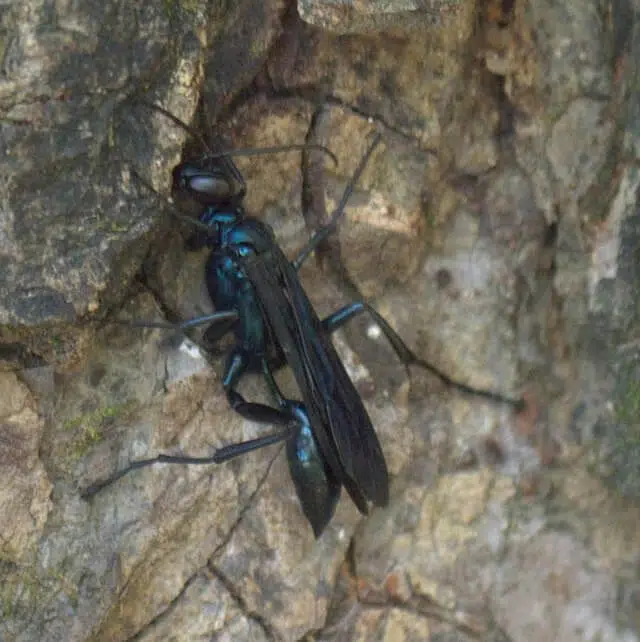
The Nearctic Blue Mud-dauber Wasp (Chalybion Californicum) looks different from all other wasps in Ohio. It has an electric blue body color which makes it stand out when seen out in nature.
The wasp lives out in nature but is also close to homes. It particularly likes to share its habitat with the Black Widow spider. It’s known as the wasp that hunts Black Widows.
However, adult Nearctic Blue Mud-dauber wasps eat plant nectar and pollen the most. These wasps only feed spiders to their larva.
When it comes to hunting, wasps work together. They are often seen flying just above the ground where it’s believed they look for spiders.
20. Acorn Plum Gall Wasp
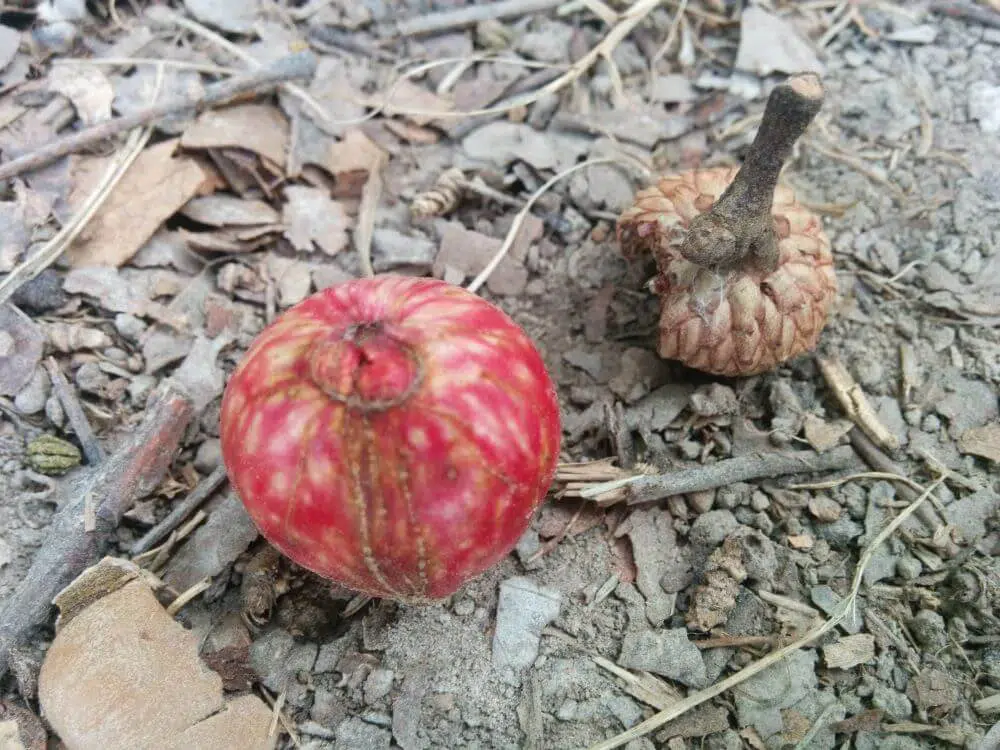
The Acorn Plum Gall Wasp (Amphibolips Quercusjuglans) is common in Ohio and Michigan. It’s mostly seen around oak trees, particularly on red oaks.
As their name implies, these are wasp species that trigger gall growth on oaks. This is an abnormal growth of a tree that the wasp uses to raise its larva. The wasp’s larva grows inside the galls until these galls fall to the ground.
Many people first assumed this species of wasps is dangerous to trees. They started using pesticides to eliminate galls. However, the latest data suggests these wasps aren’t dangerous to oak trees.
21. Larger Empty Oak Apple Wasp
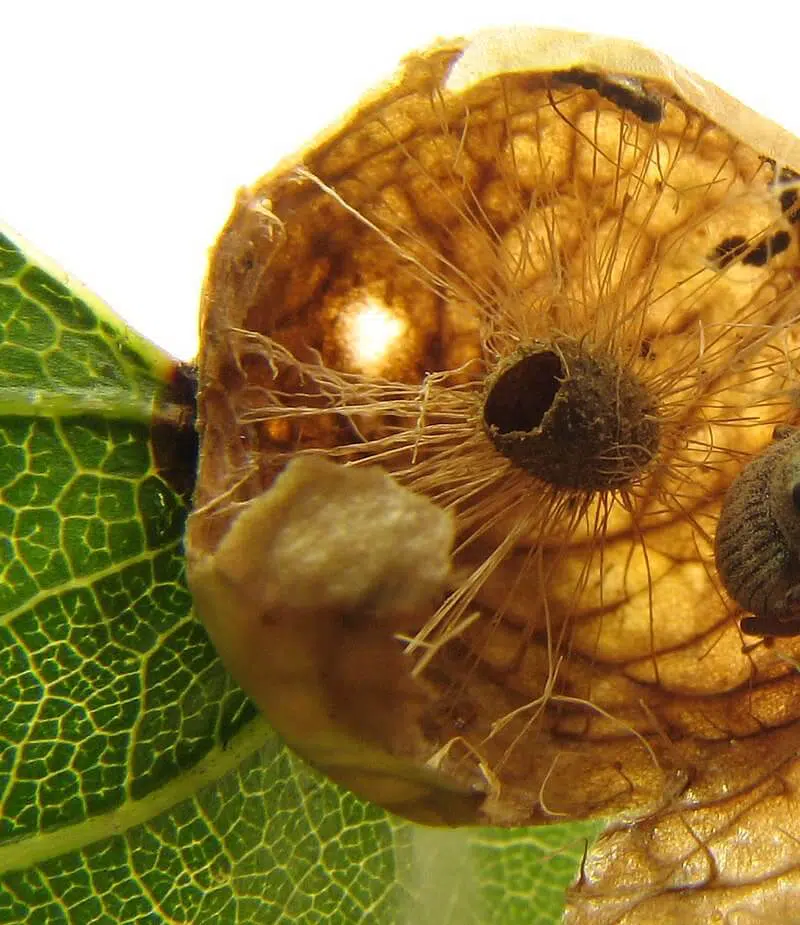
This species of wasp (Amphibolips Quercusinanis) is also very common in Ohio around oaks. Red oaks are the preferred habitat of the wasps. They can be some of the easiest gall wasps to spot as they create multi-colored galls on trees.
These galls are seen in May. Adult wasps emerge from these galls in June.
22. Long-tailed Giant Ichneumonid Wasp
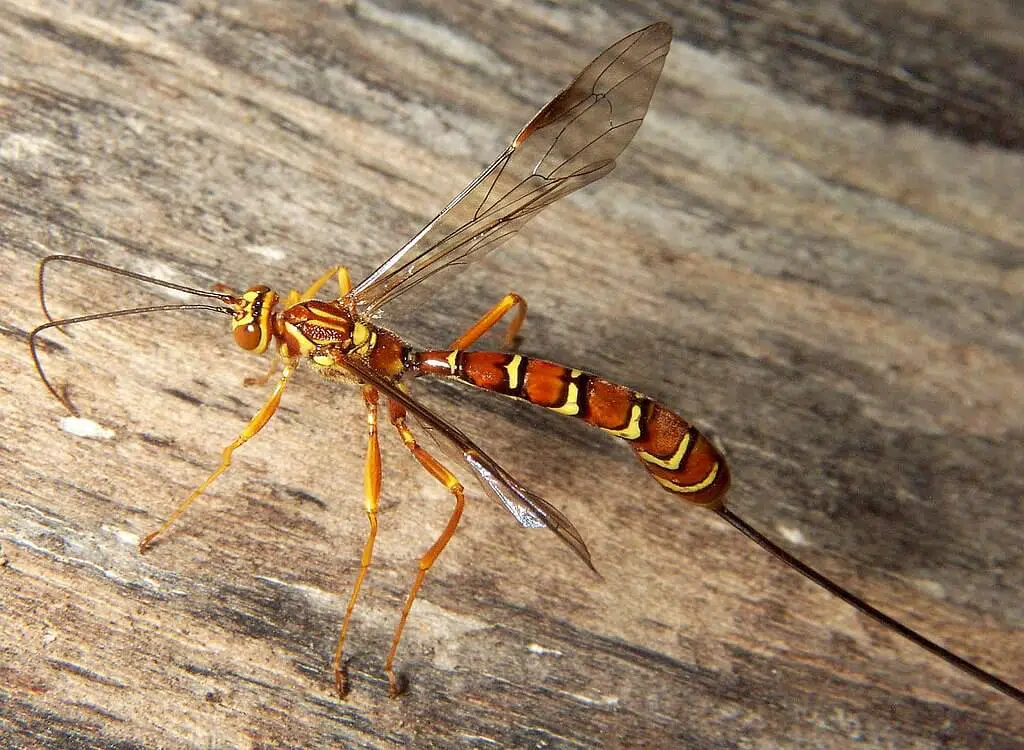
This large species of wasps (Megarhyssa Macrurus) are parasitoid but not dangerous to humans. They generally don’t sting and they aren’t interested in people.
These wasps are found on tree bark where they are highly interested in the larva of the Pigeon Hornetail.
The female wasp can detect this larva immediately. This larva is laid in decaying wood. But the female Long-tailed Giant Ichneumonid Wasp stings and paralyzes the larva laying its eggs on top.
23. Mexican Grass-carrying Wasp
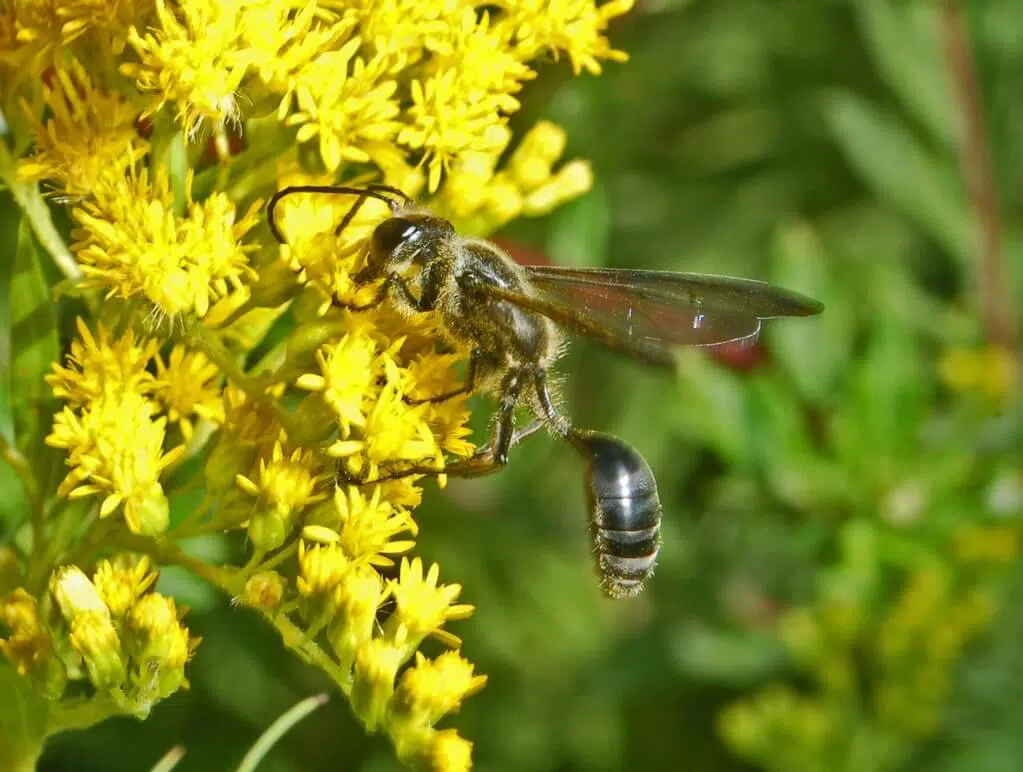
Looking similar to black ants, the Mexican Grass-carrying Wasp (Isodontia Mexicana) is also found in the state. It builds shelters in hollow pieces of wood. These hollow parts are then filled with grass. This habit inspired the name of the species.
It’s not considered a dangerous species in Ohio as it’s not very numerous. However, this wasp has made its way to Europe where it’s seen as a pest. There are no natural predators to the wasp in Europe which means it can multiple freely. However, other wasps eat it in Ohio.
24. Hedgehog Gall Wasp
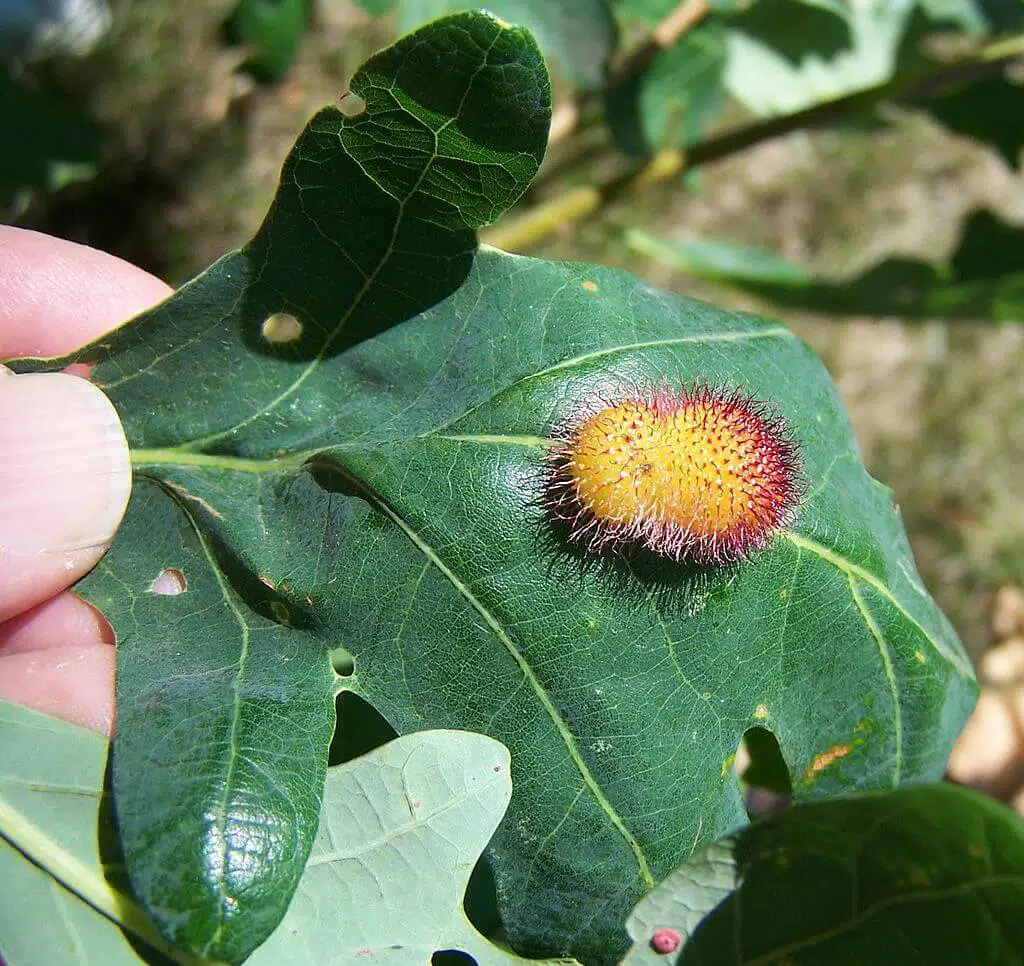
These gall wasps (Acraspis Erinacei) are also sometimes black, as the Mexican Grass-carrying Wasp. However, the Hedgehog Gall Wasp is also brown-red.
It lives on oaks where it triggers gall formation. This is why this wasp is only found in states such as Ohio where there are sufficient oak trees for it to grow.
The galls of the species are yellow with red spikes which makes it easy to identify on green oak leaves.
25. American Pelecinid Wasp
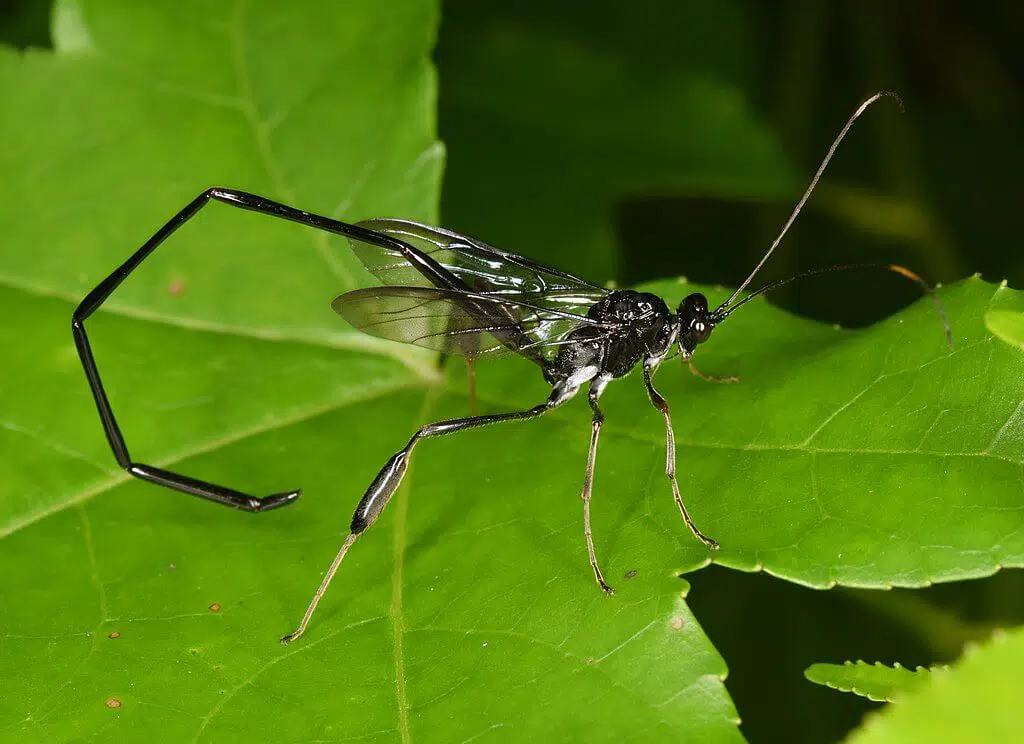
This rare species of wasp (Pelecinus Polyturator) is often seen in Ohio, particularly the females of the species as the male wasps are more popular in Southern regions of the country. It’s a distinct-looking species with an elongated body and a long stinger.
These shiny thin black wasps are mostly seen on crops, woods, and fields. They can sometimes live in suburban areas provisioned there’s enough nectar around for the adults to feed on.
Similar to the digger wasp, the American Pelecinid Wasp lays eggs on the June Beetle that lives underground.
26. Spongy Oak Apple Gall Wasp
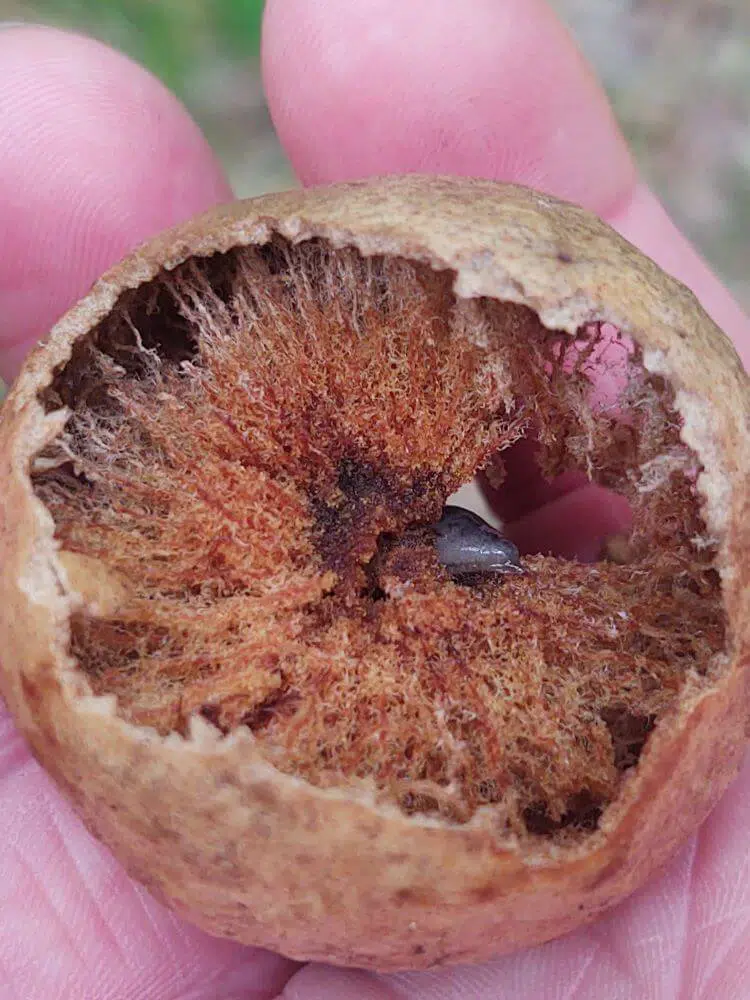
These types of gall wasps (Amphibolips Confluenta) live around almost all types of oaks. They like red oaks, black oaks, and scarlet oaks alike.
Their galls look similar to fruits and they would be difficult to differentiate from the rest of the tree for those that aren’t familiar with oak galls.
The galls of these wasps are green. They turn brown before the galls fall down and before the wasps emerge from them.
The galls are generally small and fruit-like. They aren’t smooth or spiked as the galls of other oak trees. However, this uneven surface that looks like the peel of lime is distinguishable.
The outer edges of the gall are thin, almost paper-like. This means the galls of this species aren’t as durable as the galls of other oak wasps in Ohio such as the Oak Rough Bulletgall Wasp (Disholcaspis quercusmamma) or the Hedgehog Gall Wasp (Acraspis erinacei).
Further Reading: